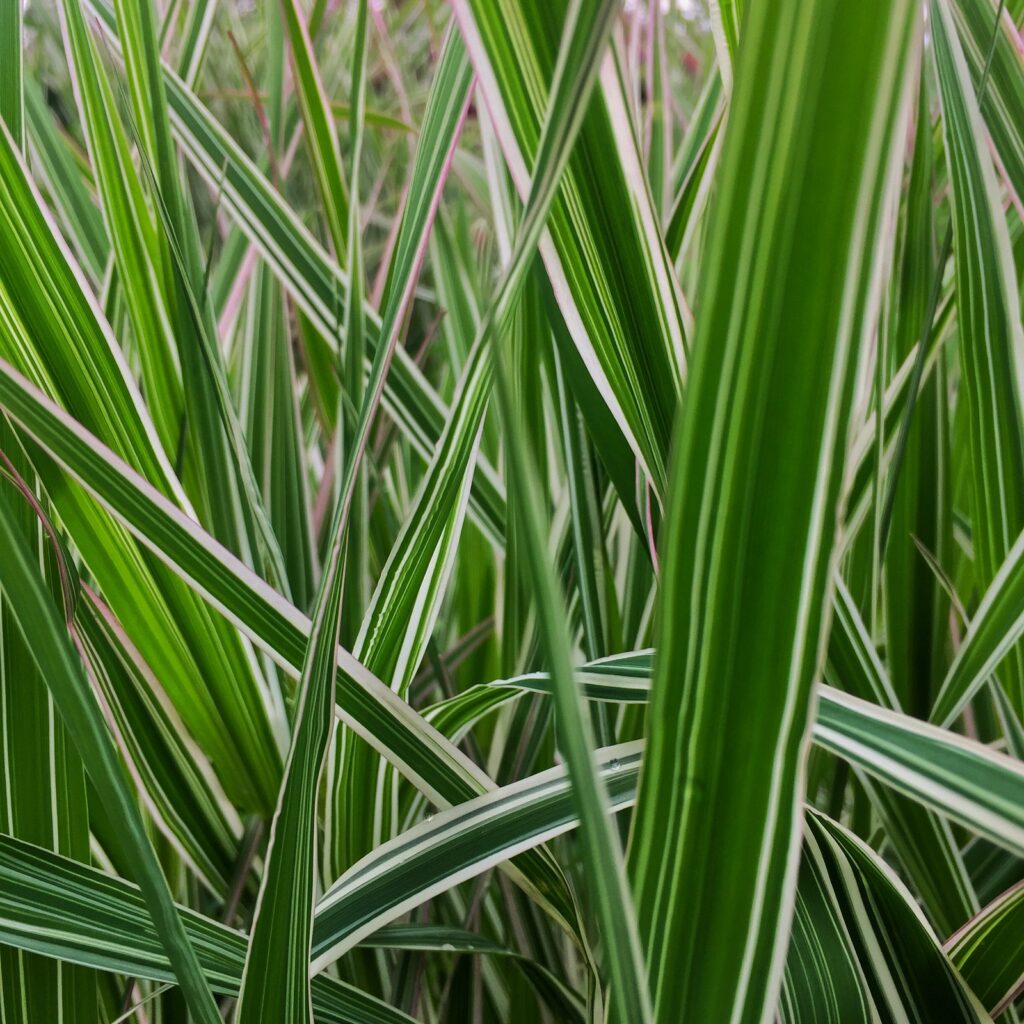Phalaris, commonly called ribbon grass–is a tough, bamboo-like ornamental grass with broadly linear and flat pale to mid-green leaves. It is commonly planted as a groundcover or at the side of a pond or stream.
Phalaris spreads via rhizomes and can be invasive; there are cultivars that are less invasive than the species. Phalaris forms a thick mass of stems and the leaves can grow to several feet tall. There are variegated forms.
Phalaris is a genus of about 15 species of tufted grasses, some are annuals, some are rhizomatous perennials. Only one, P. arundinacea, is commonly used in gardens as a ground cover.
Phalaris are native to North America, Europe, Asia, and North Africa.
Get to know Phalaris
- Plant type: Rhizomatous perennial grass
- Growing zones and range: Zone 4 to 9
- Hardiness: Hardy to Zone 4
- Height and width: Grows to 3 to 5 feet (1-1.5m) tall with indefinite spread if not contained
- Flowers: Compact panicles of ovate spikelets each with 1 to 3 flowers
- Bloom time: Summer
- Uses: Groundcover, margin of ponds
- Common name: Ribbon grass
- Botanical name: Phalaris
- Family name: Poaceae
- Origin: Temperate regions worldwide
Where to plant Phalaris
- Plant Phalaris in full sun or partial shade.
- Phalaris will grow in average soil, from dry slope to moist pond or lake margins.
- Phalaris will thrive were is is occasionally flooded.
- Phalaris is a good choice for an area that needs to be seasonally cleared, perhaps for snow removal.

When to plant Phalaris
- Set Phalaris in the garden in spring or autumn.
Planting and spacing Phalaris
- Space Phalaris 36 inches or more apart; it spreads quickly by rhizomes.
- To control Phalaris place a barrier in its path or grow it in a container.
How to water and feed Phalaris
- Phalaris grows best just moist soil, but it wil grow in dry soil.
- Phalaris usually needs not fertilizing.
Phalaris care
- Phalaris once established is difficult to eradicate. Like running bamboo, it can be controlled by a physical barrier placed in the ground.
- Phalaris can be mowed in midseason to encourage a flush of new growth. T
Phalaris pests and diseases
- Phalris is susceptible to ergot, rust, smut, brown patch and a variety of leaf spot.
Phalaris propagation
- Divide Phalaris from midspring to midsummer.
Phalaris varieties to grow
- Phalaris arundinacea. Ribbon grass. Tough, bamboo-like grass that spreads aggressively by underground runners to form spreading, 2 to 3-foot-high clumps; deep green leaves turn buff in fall; airy flower clusters are white, aging to pale brown. Cultivars include: ‘Picta’ has green leaves with longitudinal white stripes. ‘Dwarf Garters’, a slow spreader half as tall as the species; and 1 ½ to 2-feet tall. ‘Mervyn Feesey’ (‘Feesey’s Form’) has white variegation strongly blushed with pink.















